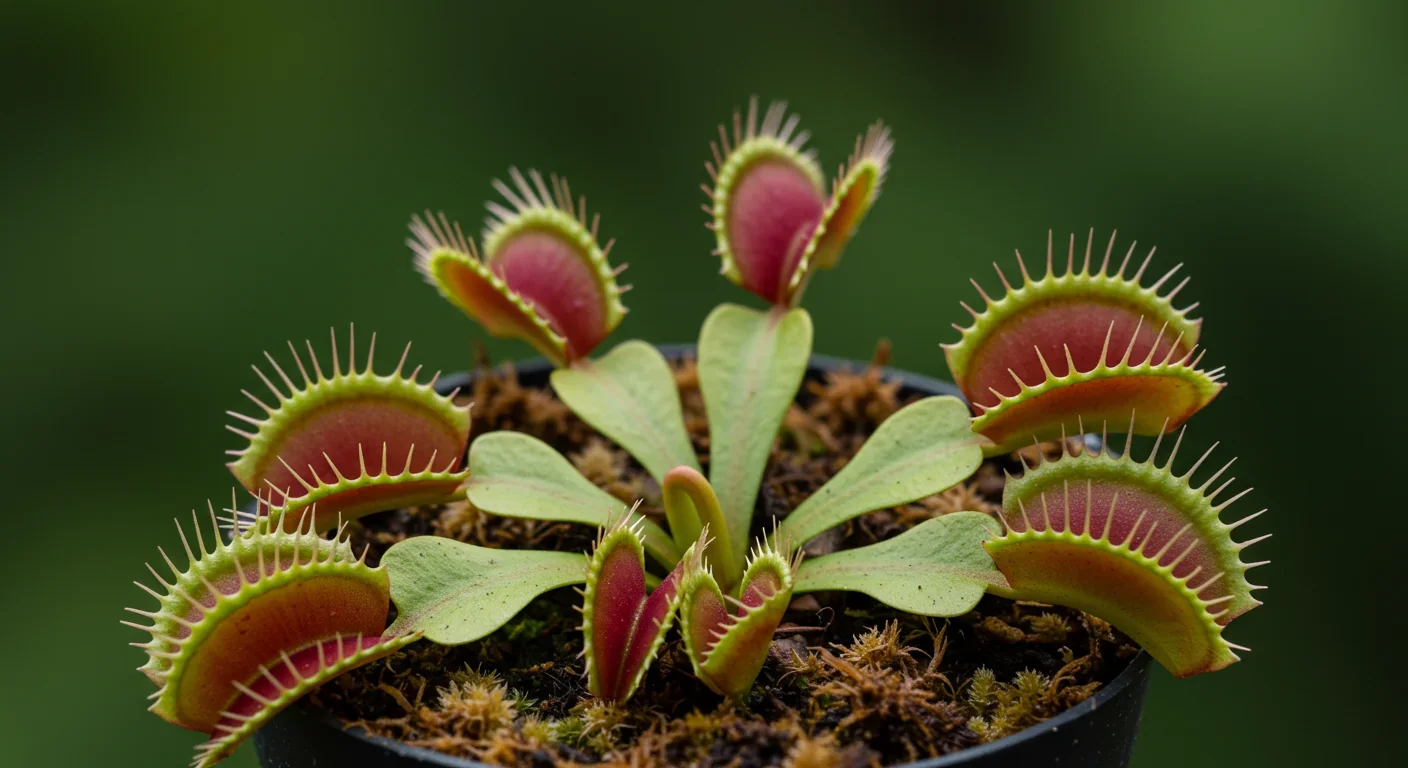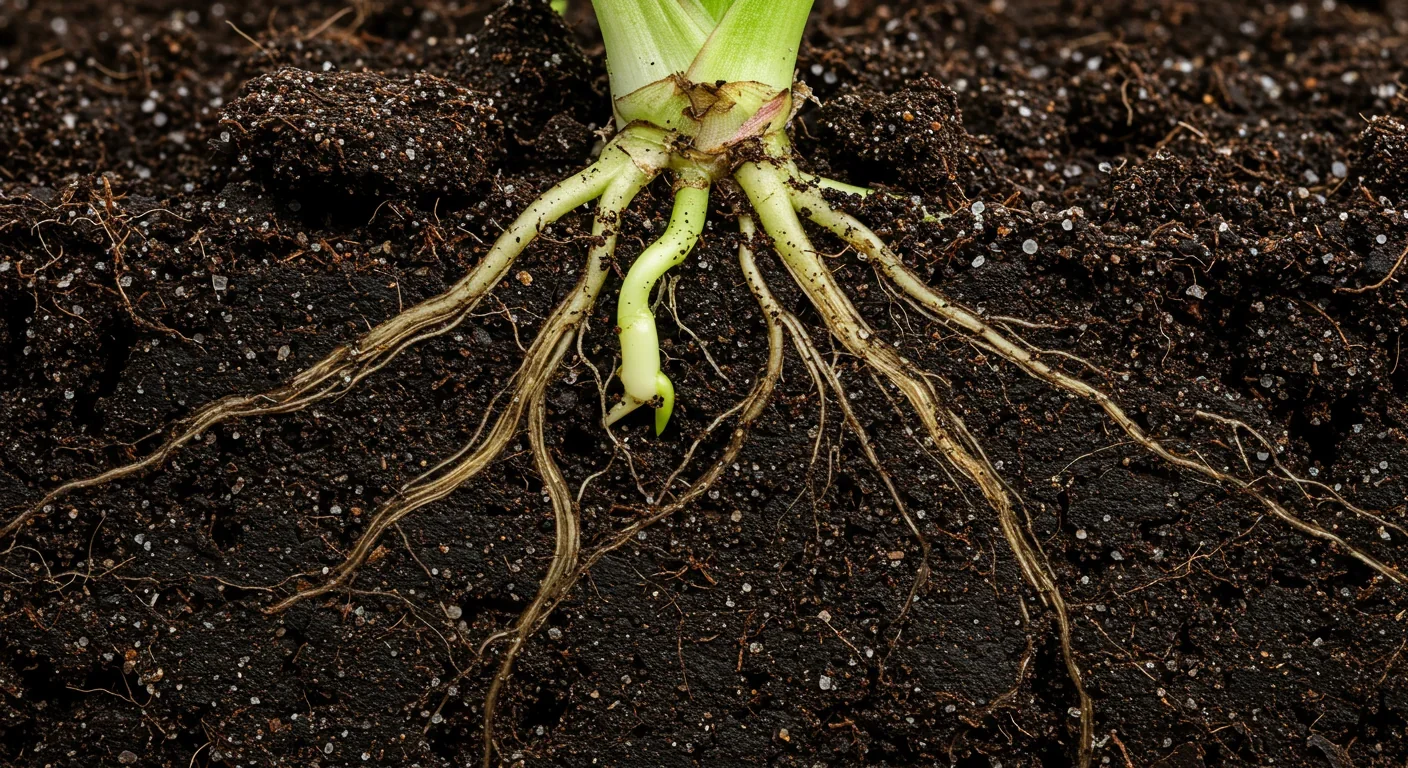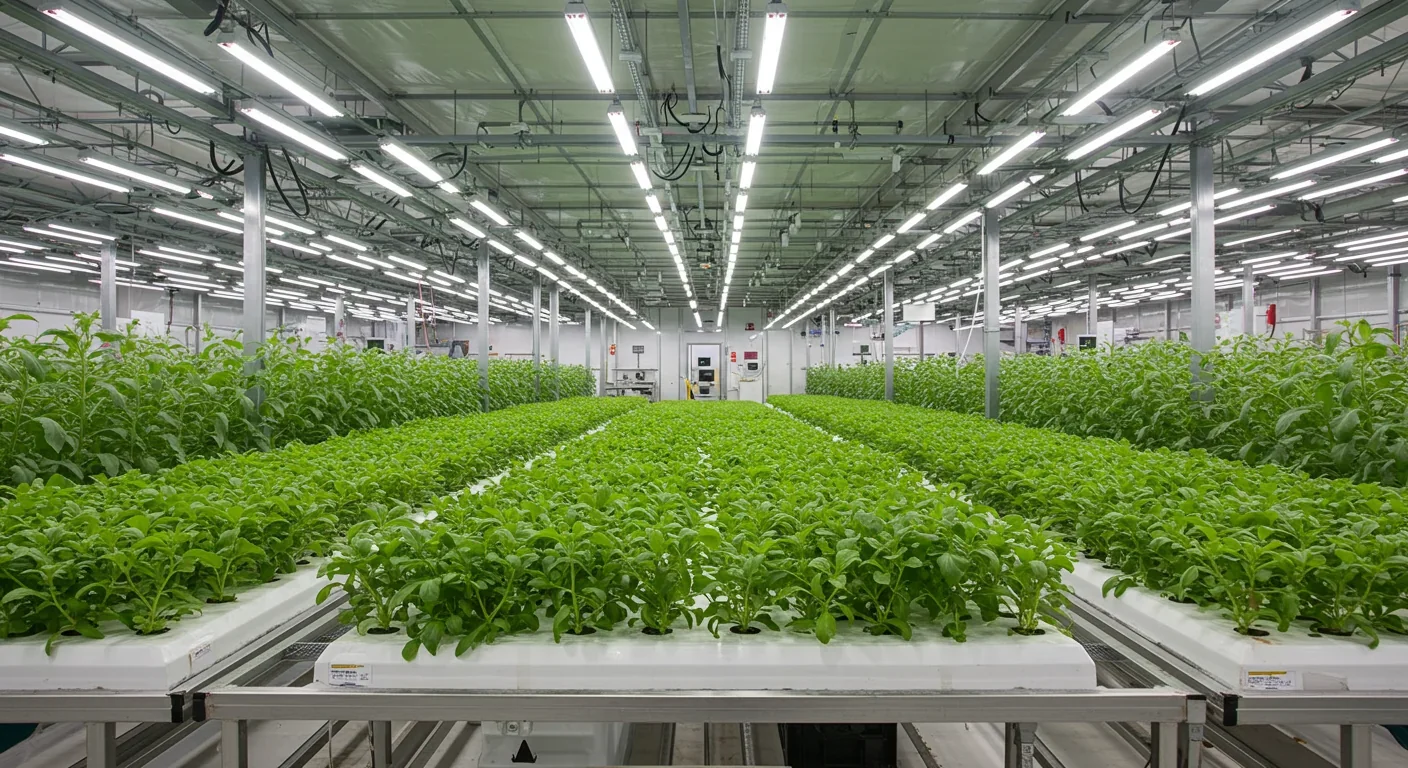Plants and Microbes: Nature's Solution to Toxic Soil

TL;DR: Scientists have discovered that plants generate electrical signals remarkably similar to nerve impulses, using calcium-based action potentials to coordinate growth, defend against threats, and communicate across their entire bodies without any nervous system—a finding that's revolutionizing agriculture and our understanding of plant intelligence.

In the next decade, your tomato plants might text you when they're thirsty. Not through some IoT gadget stuck in the soil, but because scientists have discovered that plants already possess sophisticated electrical communication networks remarkably similar to animal nerve impulses. Touch a Mimosa plant and its leaves fold within seconds. Snap a Venus flytrap's trigger hairs twice in quick succession and its jaws slam shut in a tenth of a second. These aren't slow chemical reactions—they're rapid-fire electrical signals racing through plant tissues at speeds that would make early telegraph operators jealous.
For over a century, researchers dismissed the idea that plants could generate action potentials like neurons. Plants don't have brains, nerves, or anything resembling a nervous system, so how could they coordinate complex behaviors across distant body parts? Yet new research using paper-thin electrode arrays that contour to plant surfaces has captured these electrical signals in real time, revealing a hidden world of bioelectric coordination that challenges everything we thought we knew about plant intelligence.
The breakthrough came when researchers developed multi-electrode arrays as thin as plastic wrap that could map electrical activity across entire plant organs. What they found was stunning: plants generate action potentials involving calcium, potassium, chloride, and hydrogen ion fluxes, triggered by neurotransmitter-like molecules such as glutamate. The voltage changes aren't trivial—plants produce depolarizations of 50-150 millivolts, comparable to what you'd measure in an animal nerve cell.
But there's a crucial difference. While animal neurons fire in milliseconds, plant action potentials unfold over seconds, propagating at millimeters to centimeters per second rather than meters per second. This isn't a bug, it's a feature. Plants don't need split-second reflexes to escape predators. Instead, they've evolved a fundamentally different temporal strategy for long-distance communication—one that trades speed for energy efficiency and whole-body coordination.
Plants produce electrical signals of 50-150 millivolts—comparable to animal neurons—but operate on a fundamentally different timescale optimized for sessile life.
The system works through specialized channels called glutamate receptor-like channels (GLRs), which control calcium flow across cell membranes. When a plant leaf is wounded by a hungry caterpillar, calcium ions flood into cells at the injury site, triggering a wave of depolarization that races through the plant's vascular system. Within minutes, leaves meters away begin producing defensive chemicals, all coordinated by electrical signals that somehow "know" the difference between wind damage and insect attack.

The story of plant electricity reads like a scientific detective novel spanning three centuries. In the 1770s, Italian scientist Luigi Galvani noticed that certain plants responded to electrical stimulation, but the observation was overshadowed by his more famous experiments with frog legs. Charles Darwin himself documented the Venus flytrap's remarkable speed in his 1875 book "Insectivorous Plants," noting that something other than slow chemical diffusion must explain how the trap's two lobes snap shut in 100 milliseconds.
The modern era of plant electrophysiology began in the 1920s when Indian scientist Jagadish Chandra Bose developed the crescograph, an instrument sensitive enough to detect minute electrical changes in plant tissues. But his work was largely dismissed by Western scientists who couldn't reconcile electrical signaling with the prevailing view of plants as essentially passive organisms.
It wasn't until the 1960s and 70s that systematic studies of plant action potentials gained traction. Researchers discovered that wounded tomato plants generated electrical signals that traveled from leaf to root, triggering defensive responses along the way. Yet even these findings remained on the fringes of plant science because the molecular mechanisms were unclear.
The turning point came in the early 2000s when researchers identified the specific ion channels responsible for plant action potentials. Suddenly, plant bioelectricity had a molecular foundation as solid as anything in neuroscience. The GLR family of channels, with 20 members in model plants like Arabidopsis and 37 in sweet potato, gave plants the hardware for electrical signaling. What researchers needed next was proof that these signals actually coordinated complex behaviors.
Think of a plant as having a distributed nervous system—not centralized like our brains, but spread throughout every tissue in a decentralized bioelectric network. The system operates on three fundamental principles that distinguish it from animal neurons while achieving similar communication goals.
Membrane Voltage as the Foundation
Every plant cell maintains a resting potential of around -120 to -200 millivolts, far more negative than animal cells. This voltage difference is maintained by specialized pumps that move charged ions across the cell membrane, creating an electrical gradient. When a stimulus arrives—mechanical pressure from wind, chemical signals from herbivores, or even a sudden change in light—ion channels open and the membrane depolarizes rapidly.
The key players are calcium channels, which swing open to let positively charged calcium flood into the cell. Within seconds, the voltage can shift by 30 millivolts or more, creating a depolarization wave that propagates to neighboring cells through plasmodesmata—tiny channels that link plant cells like gap junctions in animal tissues. As the wave spreads, potassium channels open and hydrogen ions get pumped out, creating a complex pattern of ion fluxes that encode information about the stimulus type and intensity.
"Plants use electrical signals in two ways: to regulate the distribution of charged molecules across membranes and to send messages long-distance across the organism."
— Lincoln Taiz, Professor Emeritus, UC Santa Cruz
Long-Distance Signaling Through the Vascular System
Once triggered, these electrical signals don't just stay local. They travel through the plant's vascular tissue—the phloem tubes that normally transport sugars and the xylem vessels that carry water. Research has shown that electrical signals can propagate from roots to leaves, covering distances of a meter or more in larger plants.

The speed varies depending on the tissue type and stimulus. In the Venus flytrap, action potentials race through leaf lobes at centimeters per second, fast enough to snap the trap shut before an insect can escape. In trees, wound signals move more slowly but can still reach from branch to root in under an hour—fast enough to mount defensive responses before herbivores finish their meal and move to another part of the plant.
What makes this especially remarkable is that plants modulate the conductance of plasmodesmata in response to calcium signals, effectively controlling the propagation speed and amplitude of action potentials. It's like having adjustable resistors in an electrical circuit, allowing the plant to fine-tune signal transmission based on the urgency and type of stimulus.
Calcium Signatures Encode Information
Here's where plant bioelectricity gets truly sophisticated. The pattern of calcium influx—its amplitude, duration, and frequency—encodes specific information about what triggered the signal. Researchers have discovered that calcium signatures differ depending on whether the stimulus is mechanical damage, pathogen attack, drought stress, or salt exposure.
When plant cells detect these calcium patterns, they activate different sets of genes and produce specific defensive compounds. A caterpillar bite triggers jasmonic acid production, which makes leaves taste terrible. Fungal infection prompts salicylic acid synthesis, which activates immune responses. All coordinated by electrical signals that translate environmental information into precise molecular responses.
If you want to understand the pinnacle of plant electrical engineering, look no further than Dionaea muscipula—the Venus flytrap. This carnivorous plant has evolved what amounts to a hair-trigger counting mechanism that would impress any electrical engineer.
Inside each trap lobe are three to six tiny trigger hairs. Touch one hair and nothing happens. But touch the same hair again within about 20 seconds, or touch two different hairs in quick succession, and the trap snaps shut in 100 milliseconds—one of the fastest movements in the entire plant kingdom.
The mechanism reveals sophisticated electrical computation. The first touch generates an action potential that doesn't reach the threshold needed for closure. But it primes the system, creating a "memory" of the stimulus. When the second touch arrives within the time window, the combined electrical signals exceed the threshold, triggering a cascade of events: calcium floods into motor cells at the hinge, water pressure drops as ions are rapidly pumped out, and the trap's two lobes flip from convex to concave in a motion so fast it's essentially explosive.
The Venus flytrap counts touches using electrical memory—two stimuli within 20 seconds trigger closure, demonstrating decision-making without a brain.
What's remarkable is the counting mechanism. The plant integrates successive stimuli without a nervous system, effectively performing simple decision-making. This prevents the trap from wasting energy closing on raindrops or wind-blown debris while ensuring it responds to the persistent stimulation of a struggling insect. The entire system runs on action potentials generated by calcium channels, demonstrating that you don't need neurons to perform temporal integration and decision-making.

If the Venus flytrap shows plant electrical systems at their fastest, Mimosa pudica—the sensitive plant—reveals their learning capabilities. Touch a Mimosa leaf and it folds within seconds, a defensive response called thigmonasty. The mechanism is pure electrical signaling: an action potential triggered in the pulvinus (the joint at the leaf base) causes rapid ion efflux, water loss, and turgor pressure collapse.
But here's where it gets interesting. Drop a Mimosa plant repeatedly and at first the leaves curl every time. After dozens of drops, though, the plant stops responding—it's habituated. Yet shake the same plant and the leaves immediately fold again. Some researchers interpret this as evidence that plants can learn to distinguish harmless from harmful stimuli.
The debate over whether this constitutes "learning" in the cognitive sense remains contentious. Critics argue that habituation could simply reflect motor fatigue or resource depletion—the plant runs out of energy to maintain defensive responses. But the fact that the plant responds immediately to shaking after habituating to drops suggests something more sophisticated is happening.
Regardless of whether we call it learning, the phenomenon demonstrates that plant electrical systems can track stimulus history and modify responses accordingly. The bioelectric networks show plasticity—they change behavior based on experience, even if the underlying mechanisms differ from animal learning.
Perhaps the most transformative discovery in plant bioelectricity involves wound responses. When a caterpillar chomps into a leaf, the damage triggers an immediate electrical signal that propagates throughout the plant at speeds of centimeters per second. Within minutes, distant leaves begin producing defensive compounds—all coordinated by the initial electrical alarm.
Researchers using fluorescent calcium indicators have directly visualized these wound-induced electrical waves spreading across plant tissues. The calcium signals don't just travel; they carry information. The amplitude and duration of the electrical wave correlate with the severity of damage, allowing the plant to calibrate its defensive response proportionally.
The electrical signal rapidly triggers chemical changes. Within 90 seconds of wounding, jasmonic acid levels spike in both the damaged tissue and distant leaves. This hormone activates genes that produce protease inhibitors (which interfere with insect digestion), toxic alkaloids, and volatile organic compounds that attract predatory wasps. The whole defensive program is set in motion by electrical signals that translate mechanical damage into precise molecular responses.
"The rapid increase of jasmonic acid following a calcium-mediated wound signal demonstrates an efficient translational mechanism of electrical to hormonal signaling."
— Research on plant wound response mechanisms
What's particularly elegant is the specificity. Different types of damage—insect chewing versus fungal infection versus mechanical tearing—generate distinct electrical and calcium signatures. Plants can decode these patterns and activate appropriate defensive responses, demonstrating an electrical "language" that encodes environmental information.
If you think plant electrical signaling is impressive aboveground, the underground story is even more remarkable. Plant roots navigate complex soil environments, avoiding obstacles, growing toward water and nutrients, and even exhibiting electrical responses to gravity and touch.
Different root regions show distinct electrical properties. The root cortex expresses voltage-dependent chloride channels at high levels, while the central cylinder expresses different ion channels, suggesting domain-specific roles in signal initiation and propagation. When roots encounter nitrate—a crucial nutrient—the epidermis undergoes a transient depolarization of about 30 millivolts within five seconds, correlating with increased calcium influx and triggering changes in growth direction.

Roots also respond electrically to gravity and touch, phenomena called gravitropism and thigmotropism. When a root is reoriented, specialized cells called statocytes detect the change in gravity direction and generate electrical signals that redistribute growth hormones, causing the root to bend back downward. Touch a root tip against a rock and electrical signals trigger growth changes that redirect the root around the obstacle.
Perhaps most intriguingly, roots show electrotropism—they grow toward certain electrical poles in applied electric fields. Different zones of the root exhibit opposite responses: the cell elongation zone moves toward the anode while the differentiation zone moves toward the cathode, creating curvature independent of other growth cues. This suggests roots can sense and respond to electrical gradients in soil, potentially using them for navigation.
Understanding plant bioelectricity isn't just academically interesting—it's potentially transformative for agriculture. If we can monitor and interpret plant electrical signals, we could detect stress, disease, and nutrient deficiency before any visible symptoms appear, enabling precision agriculture that responds to plant needs in real time.
Researchers have already developed electrochemical sensors capable of detecting plant signaling molecules with voltage sensitivities of 0-5 millivolts, sampled at 400 Hz. These devices can capture the full temporal dynamics of plant action potentials, creating detailed electrical "fingerprints" of plant physiological states.
Imagine a future where sensors on every plant in a greenhouse continuously monitor bioelectric activity. Machine learning algorithms trained on plant electrophysiology data could predict water stress hours before wilting occurs, detect pathogen infections days before visual symptoms, and optimize fertilizer application by monitoring root electrical responses to nutrients. Early trials using such systems have achieved remarkable accuracy in distinguishing healthy plants from those under various stresses.
Bioelectric monitoring could detect plant stress, disease, and nutrient deficiency hours or days before any visible symptoms appear, revolutionizing precision agriculture.
The implications extend beyond monitoring. If we understand how electrical signals coordinate growth and development, we might engineer plants with enhanced stress responses, faster wound healing, or improved pathogen resistance. Some researchers are exploring whether external electrical stimulation can prime plant defenses or accelerate growth, though results remain preliminary.
There's also potential for breeding. Now that we've identified the GLR genes responsible for electrical signaling, we can select for variants that confer better stress tolerance or faster signal propagation. Sweet potatoes with 37 GLR genes show different electrical responses than their diploid relatives with 32 GLRs—understanding these differences could guide crop improvement programs.
The story of plant bioelectricity extends beyond individual organisms into ecosystem-level interactions. Recent research suggests that electrical signals don't stop at the root—they may be transmitted through mycorrhizal networks, the vast fungal webs that connect trees and plants across entire forests.
When one tree is attacked by insects, it can send electrical and chemical signals through the mycorrhizal network, alerting neighboring trees to activate their defenses preemptively. While the primary mechanism is chemical—volatile organic compounds and root exudates—evidence suggests electrical signals also play a role in this underground communication.
This distributed bioelectric network provides a form of non-centralized intelligence, enabling plants to anticipate environmental challenges and coordinate growth decisions across populations. It's not consciousness in any meaningful sense, but it is information processing and communication at scales that blur our traditional categories.
The ecosystem-level implications are profound. Forests may function as superorganisms with electrical and chemical communication networks that coordinate resource allocation, defensive responses, and even reproductive timing. Disturb one part of the network and electrical signals ripple through the system, triggering cascading responses across the forest floor.
Does all this electrical activity mean plants are conscious or intelligent? Here we enter controversial territory. Most plant scientists emphatically say no—plants lack the neural architecture required for consciousness as we understand it in animals. They don't have brains, centralized information processing, or the evolutionary pressures that drove the development of consciousness in animals that must make rapid decisions about predators and prey.
Yet the bioelectric capabilities of plants challenge our definitions. If intelligence means processing environmental information, making decisions based on stimulus patterns, learning from experience, and coordinating complex responses—then plants demonstrate these capabilities through electrical signaling. They just do it without neurons, in ways that don't require consciousness.
"The brain is a very expensive organ, and there's absolutely no advantage to the plant to have a highly developed nervous system."
— Lincoln Taiz, UC Santa Cruz
Perhaps the lesson here is that we need more nuanced concepts. There's a difference between information processing and consciousness, between distributed sensing and centralized awareness. Plants have evolved sophisticated electrical communication networks that solve the same problems animal nervous systems address—coordinating body-wide responses to environmental challenges—but through radically different mechanisms.
The debate also highlights how human-centric our frameworks are. We tend to see nervous systems and brains as the pinnacle of biological information processing because that's what we have. But plants remind us that evolution finds many solutions to the same problems. Distributed bioelectric networks work brilliantly for organisms that can't run away, must deal with threats to any part of their modular bodies, and live on timescales where speed matters less than resilience.
As our understanding of plant bioelectricity deepens, we're developing the tools to essentially "read" plant signaling in real time. Multi-electrode arrays can now map electrical activity across entire organs with millisecond precision. Time-lapse video analysis combined with electrophysiology data allows researchers to correlate electrical signals with growth movements and physiological changes.
Machine learning is accelerating this work. Artificial neural networks trained on plant electrical data can recognize patterns invisible to human observers, distinguishing the electrical signatures of different stresses, developmental stages, and environmental conditions. Some researchers call these systems plant bioelectric early warning systems, capable of detecting problems before conventional sensors register anything amiss.
The technology is becoming accessible too. Open-source libraries of plant electrophysiology responses are being compiled and shared globally, enabling researchers worldwide to compare electrical fingerprints across species and conditions. This collaborative approach promises to rapidly expand our understanding of plant electrical communication.
Within a decade, bioelectric monitoring may become standard in commercial agriculture, forestry management, and ecological research. The signals plants have been sending all along—we're finally learning to listen.
The discovery of sophisticated electrical signaling in plants represents one of those rare moments when scientific findings force us to reconsider fundamental assumptions. For most of human history, we've seen plants as the passive backdrop to animal action, organisms that grow and respond but don't really "do" anything requiring coordination or communication.
That view is collapsing under the weight of evidence. Plants sense their environment through dozens of mechanisms, process that information through bioelectric networks, make decisions about growth and defense, communicate with neighbors, and even exhibit forms of memory and learning. They accomplish all this without brains, proving that intelligence—defined functionally rather than structurally—can emerge from many types of biological systems.
The implications ripple through multiple fields. Agricultural scientists are developing new monitoring technologies. Evolutionary biologists are reconsidering the pressures that shaped plant capabilities. Philosophers are grappling with what these discoveries mean for our ethical treatment of plants. Engineers are borrowing principles from plant bioelectricity to design decentralized communication networks and distributed sensing systems.
Plant bioelectricity is forcing a paradigm shift across multiple disciplines—from agriculture and biology to philosophy and engineering—as we recognize that intelligence can emerge from radically different biological architectures.
Perhaps most importantly, plant electrical signaling reminds us how much we still don't understand about the living world. We share this planet with organisms whose sensory experiences and information processing are profoundly different from ours. As we develop the tools to decode their signals, we're discovering that plants have been communicating all along—we just weren't listening on the right frequency.
The roots beneath our feet are alive with electrical chatter, coordinate growth and defense through action potentials, and participate in communication networks spanning entire ecosystems. That's not metaphor or poetic license. It's measurable reality, captured by electrodes and cameras, quantified in millivolts and ion fluxes, and substantiated by decades of research.
We're witnessing a paradigm shift in how we understand plant life. And the more we learn about plant bioelectricity, the more we realize that the quiet organisms we've overlooked for so long are doing something remarkably sophisticated right under our noses.

Curiosity rover detects mysterious methane spikes on Mars that vanish within hours, defying atmospheric models. Scientists debate whether the source is hidden microbial life or geological processes, while new research reveals UV-activated dust rapidly destroys the gas.

CMA is a selective cellular cleanup system that targets damaged proteins for degradation. As we age, CMA declines—leading to toxic protein accumulation and neurodegeneration. Scientists are developing therapies to restore CMA function and potentially prevent brain diseases.

Intercropping boosts farm yields by 20-50% by growing multiple crops together, using complementary resource use, nitrogen fixation, and pest suppression to build resilience against climate shocks while reducing costs.

The Baader-Meinhof phenomenon explains why newly learned information suddenly seems everywhere. This frequency illusion results from selective attention and confirmation bias—adaptive evolutionary mechanisms now amplified by social media algorithms.

Plants and soil microbes form powerful partnerships that can clean contaminated soil at a fraction of traditional costs. These phytoremediation networks use biological processes to extract, degrade, or stabilize toxic pollutants, offering a sustainable alternative to excavation for brownfields and agricultural land.

Renters pay mortgage-equivalent amounts but build zero wealth, creating a 40x wealth gap with homeowners. Institutional investors have transformed housing into a wealth extraction mechanism where working families transfer $720,000+ over 30 years while property owners accumulate equity and generational wealth.

AlphaGo revolutionized AI by defeating world champion Lee Sedol through reinforcement learning and neural networks. Its successor, AlphaGo Zero, learned purely through self-play, discovering strategies superior to millennia of human knowledge—opening new frontiers in AI applications across healthcare, robotics, and optimization.